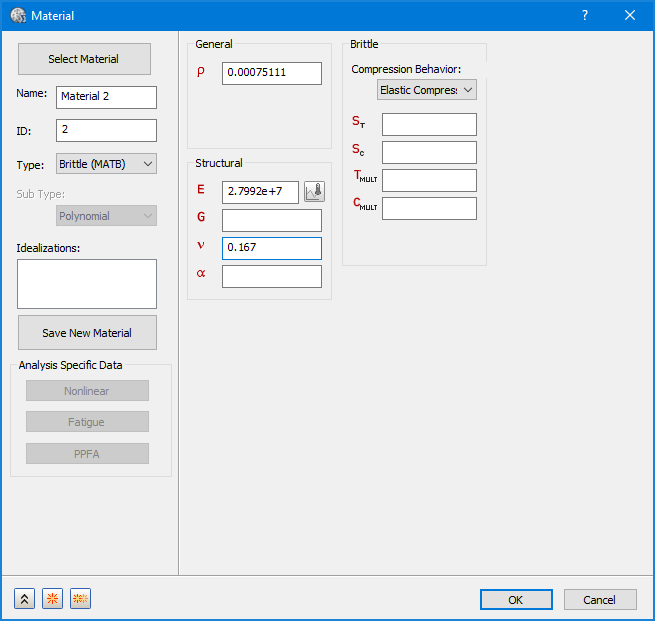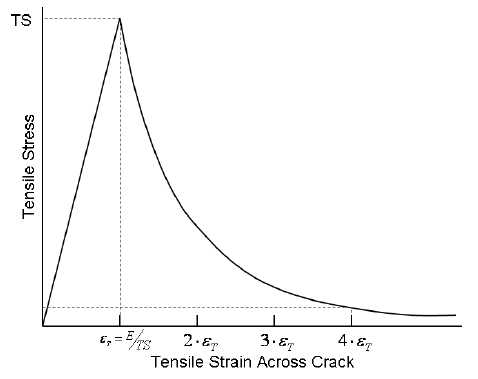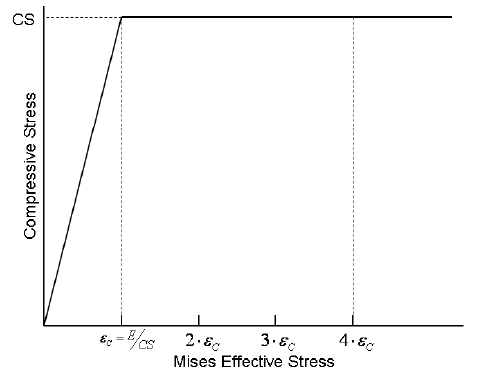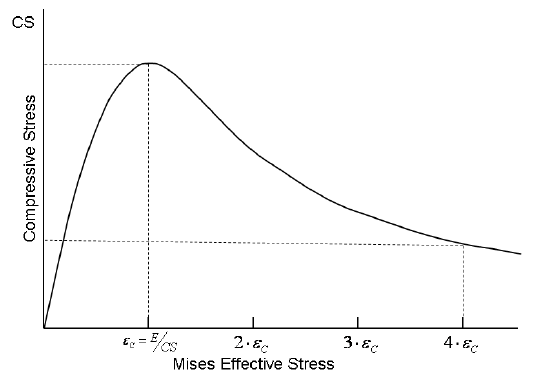This material is used only in Explicit Dynamics analysis. After selecting Brittle (MATB) from the Type menu, the following Material sections are available: General, Structural and Brittle.

You can input Young's modulus, shear modulus, Poisson's ratio, thermal expansion coefficient, and mass density under the General and Structural sections.
- Brittle compression behavior

The tensile behavior of the material is purely elastic up to the tensile strength value. Individual cracks can form in orthogonal principal strain directions. The stress strain curve in tension strain softens after cracking occurs, as shown in Figure 1.

Figure 1: Tensile stress/strain curve
- The compressive behavior of the material may be either Elastic (Hooke's Law), Elastic/Perfectly-Plastic (Figure 2), or Elastic/Plastic Strain Softening (Figure 3).

Figure 2: Elastic/perfectly plastic compression model (CMODEL = 2)

Figure 3: Elastic/plastic strain softening model (CMODEL = 3)
- ST: Tensile Strength
Tensile Strength of the material.
- SC: Compressive Strength
A compressive strength value is only required if CMODEL = 2 or 3. The default value of 1.E30 implies infinite strength.
- TMULT: Tensile deletion strain multiplier
The tensile strain at which the material point is deleted from the mesh, if the BRITTLE deletion criteria was specified for this part, is determined from this multiple of the failure strain. In Figure 1, the deletion strain is shown for TMULT = 4. The default value of 1000 implies no element deletion in the material.
- CMULT: Compression deletion strain multiplier
The compressive strain at which the material point is deleted from the mesh (if the BRITTLE deletion criteria was specified for this part PID) is determined from this multiple of the failure strain. In Figures 2 and 3, the deletion strain is shown for CMULT = 4. The default value of 1000 implies no deletion in the material.
PS: The deletion strains defined by TMULT and CMULT have no effect unless the BRITTLE element DELETION option is specified for this part PID.